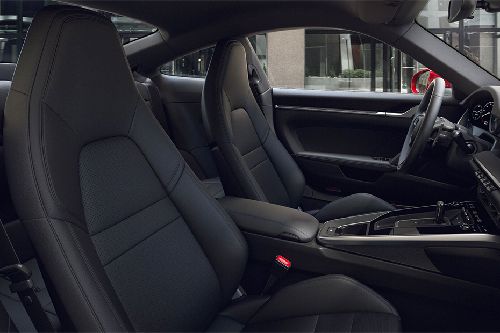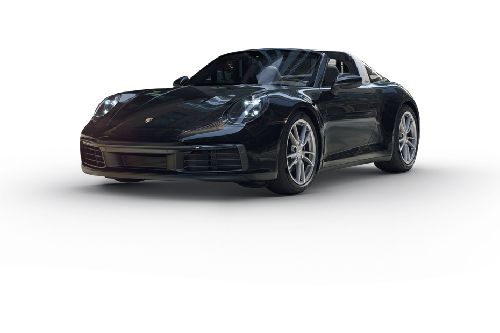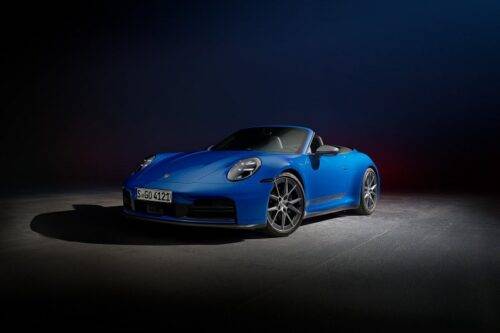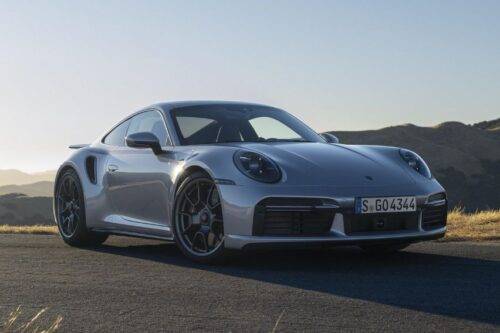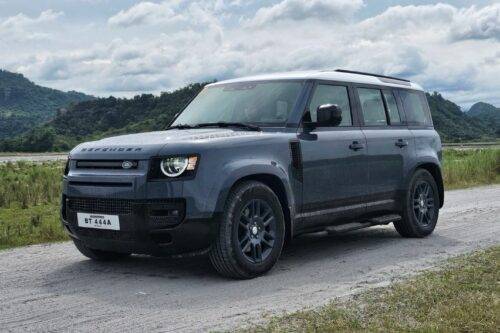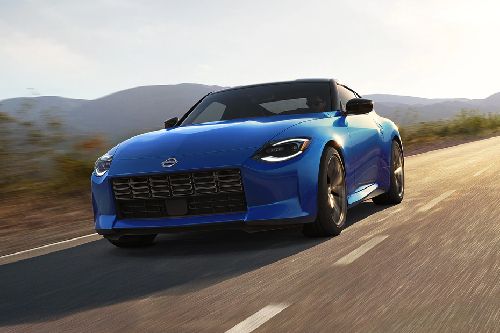Porsche celebrates 25 years of 996-generation 911

MANILA: When the 996-generation Porsche 911 debuted at the 1997 IAA International Motor Show in Frankfurt, fans were astounded. It was a vehicle that defied various norms. Everything was new, with the exception of the legendary Porsche 911 design that had been significantly altered and the rear-engined drive concept. Because it used water cooling rather than air cooling and a revolutionary parts-sharing approach with the 986-generation Porsche Boxster, the interiors of the 996 and the Boxster were identical up to the B-pillars. The six-cylinder engine's boxer principle also remained unchanged.
KEY TAKEAWAYS
What are the notable features of the 996-generation Porsche 911?
The 996-generation Porsche 911 features the legendary Porsche 911 design that had been significantly altered, the rear-engined drive concept, water cooling, revolutionary parts-sharing approach with the 986-generation Porsche Boxster, and six-cylinder boxer engine.How much 996-generation Porsche 911 units were sold?
Porsche sold almost 175,000 units of 996-generation Porsche 911.According to August Achleitner, it was time to “break with old habits.” He was the strategic head of the overall 996 vehicle concept throughout his term as Head of Technical Product Planning, Vehicle Concepts and Package including Special Projects from 1989 to 2000. “Porsche needed a car in a lower price segment, to help generate a higher volume of sales, so this led to the idea of the Boxster and the 996 sharing parts,” he stated.
The new 911 had to look like a 911, there was no doubt about that, but it was not immediately clear which engine would go there. “We experimented with the engine because the air-cooled two-valve-per-cylinder designs were at the end of the road technologically in terms of emissions and power. Air-cooled four-valve boxers didn’t work due to various hotspots that we couldn’t get a handle on. In 1989, a compact V8 was even fitted in the rear on a trial basis, but that idea was also discarded. So that brought us to water-cooled, four-valve boxer engines,” Achleitner said.
Former Porsche Chief Designer Harm Lagaaij was in charge of the 996's appearance. He still remembers how astonished he was at the time by the concept of creating a mid-engine roadster and a rear-engine coupe that were identical from the front to the B-pillar.

“The task was a major challenge but we mastered it by first designing a number of different Boxster-996 matching parts,” Lagaaij stated.
The modelers had to work directly on 1:1-scale models because of time restrictions. Porsche hired numerous specialists to help it all come together on time, growing Lagaaij's crew to 80 members at its peak.
Due to the Boxster concept car's popularity after its 1993 debut at the Detroit Motor Show, the two chosen design models resembled its appearance. The Boxster concept car wowed the crowds and was dubbed “Best of Show.”
“I knew immediately that the show car’s front end would fit with the 996 as well. What people forget is that we were working on all three versions – 996, 986 and the concept car – at the same time. Otherwise, it would have taken too long before the public heard about the cars,” Lagaaij said.

He understood the risk of combining the 996, 911, and 986 Boxster models, but other concerns were more critical. “The pressure and the imperative of saving the company was the top priority,” he said.
Every department involved in the front end was affected by the new parts-sharing concept, including the suspension, electrics, body, and overall packaging. “The program envisioned that we would sell a total of at least 30,000 units of both vehicles with a good return on investment,” Achleitner said.
This was also the reason why the Boxster was introduced in 1996, coming out a year before the 1997 debut of the 996. The strategy was successful as well; between 50,000 and 60,000 units of the 996-generation Porsche 911 were sold each year.
Internally, there was never any criticism of the concept or the design; nevertheless, after a few months, the press began to dislike the look and function of the headlight units, which included integrated indicators and turn signals. The designers were taken aback because the Boxster concept car's design had recently received high praise. “The design was totally unique: five functions in a single module that were not expensive and could be installed in minutes on the assembly line,” Lagaaij said.

The Cabriolet joined the Coupe in April 1998, adding a fully electric hood that could be raised or lowered in 20 seconds. There was no need for a tonneau cover because it disappeared when it was retracted under a metal cover plate. Six months later, Porsche added an all-wheel-drive 911 Carrera 4 in Coupe and Cabriolet forms, both using the body of the standard 911, to complete the duo. This all-wheel-drive Carrera and the 305kph, four-wheel-drive 911 Turbo, which was offered from January 2000 with a 420ps twin-turbo engine, were part of the product planning from the beginning.
“In the design of the 996, we made the transmission tunnel sufficiently large that an all-wheel drivetrain would fit into it. That required some compromises: due to the parts-sharing plan, the Boxster also had this same detail, although it was never available with all-wheel drive,” Achleitner said.
In contrast to the Turbo and Carrera 4 models, which were planned, the 911 GT3 model, which was released in May 1999, came about almost by chance. Porsche developed a 360ps offshoot of the 911 as a road-legal homologation vehicle due to changing motorsport regulations.
“The commercial success and the unit numbers were not great at first and yet the 911 GT3 marked the beginning of the establishment of an independent brand – because with the 911 GT3 of the 996 generation, we established a clear difference between an everyday 911 and a motorsport-inspired road car,” Achleitner stated.

The Porsche 911 GT2, which was based on the Porsche 911 Turbo and had a 3.6-liter boxer engine with 462ps, came next in January 2001. It was the first model to come standard with ceramic brakes.
The 2002 model year saw a redesign of the 996 generation. Power was increased to 320ps, and displacement was boosted to 3,596 cc. With the larger bodywork of the Porsche 911 Turbo, the Porsche 911 Targa and Porsche 911 Carrera 4S Coupe joined the lineup. In 2003, the 4S variant with an open top was released. Porsche also produced a Cabriolet version of the Turbo for the 2004 model year, as well as the 911 Carrera Coupe “40 Years of Porsche 911” with 345ps, sports suspension, and an electric sunroof, as one of several special editions. Starting with the 2005 model year, the Turbo S was offered as a Coupe and Cabriolet with 450ps. Never before in the history of the 911 have there been as many variants as in the 996 generation. Porsche would eventually sell almost 175,000 units.
Photos from Porsche
Also read: Porsche Taycan reaches 100,000-unit production milestone
Sell your car at the best price
 Verified and genuine buyers
Verified and genuine buyers
-
Explore Porsche 911
Porsche Car Models
Don't Miss
Porsche 911 Promos, DP & Monthly Installment
PIMS 2024
Trending & Fresh Updates
- Latest
- Popular
You might also be interested in
- News
- Featured Stories
Porsche Featured Cars
- Popular
Latest Porsche 911 Car Videos on Zigwheels

Compare & Recommended

|
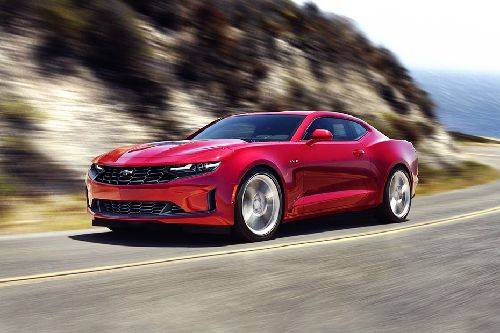
|

|

|

|
|
Engine
3.0L Gasoline Engine, 6 Cylinder 24 Valve
|
2.0L Gasoline Engine, In-Line 4 Cylinder 16 Valve DOHC
|
3.5L Gasoline Engine, 6 Cylinder 24 Valve
|
6.4L Gasoline Engine, 8 Cylinder 32 Valve
|
3.0L Gasoline Engine, In-Line 6 Cylinder 24 Valve
|
|
Alloy Wheels
Yes
|
Yes
|
Yes
|
Yes
|
Yes
|
|
Engine Start/Stop Button
Yes
|
Yes
|
Yes
|
Yes
|
Yes
|
|
Headlamp Type
LED
|
LED
|
LED
|
LED
|
LED
|
|
Brake Assist
Yes
|
Yes
|
Yes
|
Yes
|
Yes
|
|
Ebd
Yes
|
Yes
|
Yes
|
Yes
|
Yes
|
|
Side Airbag-Front
Yes
|
Yes
|
Yes
|
Yes
|
Yes
|
|
Rear Camera
Yes
|
Yes
|
Yes
|
Yes
|
Yes
|
|
Air Quality Control
-
|
-
|
Yes
|
-
|
-
|
|
Navigation System
-
|
-
|
Yes
|
Yes
|
Yes
|
|
|
Trending Coupe
- Latest
- Upcoming
- Popular
Porsche 911 Car Articles From Carmudi
- journal













